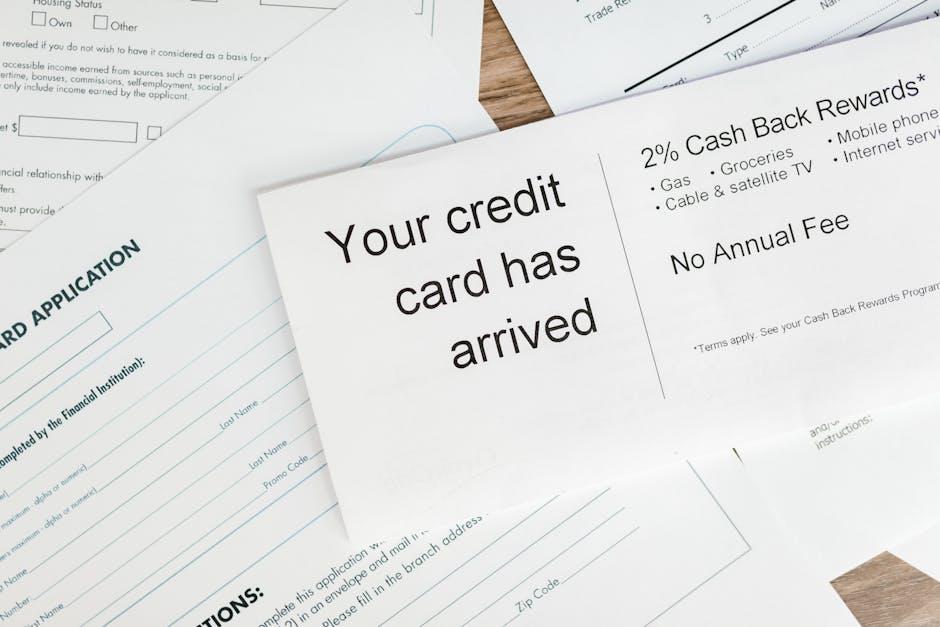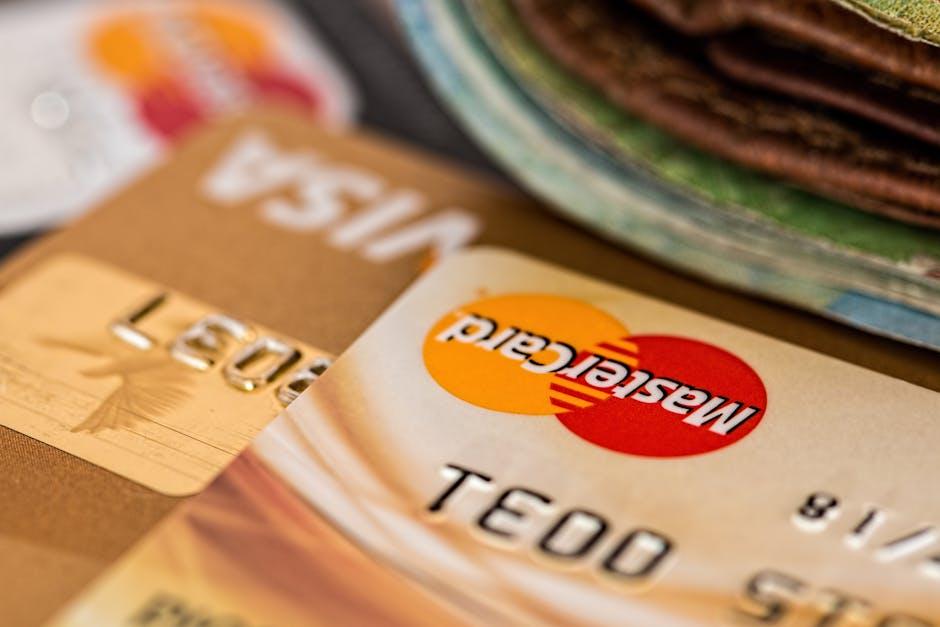Navigating the world of banking can often feel like wandering through a minefield of hidden fees and unexpected charges. As you strive to gain control over your financial future, understanding these sneaky costs becomes essential. From ATM fees that chip away at your cash withdrawals to monthly maintenance charges that silently diminish your savings, these fees can pile up before you even notice. In this article, we’ll explore effective strategies to help you master your money and avoid the pitfalls of everyday banking fees. By arming yourself with knowledge and actionable tips, you can ensure that your hard-earned money works for you, rather than lining the pockets of your bank.
Understanding Bank Fees and Their Impact on Your Finances
Bank fees can feel like a sneaky tax on your hard-earned money. Understanding these fees is crucial to maintaining your financial health and making informed decisions about your finances. Here’s a closer look at the common types of bank fees, their implications, and how you can avoid them.
Types of Common Bank Fees
- Monthly Maintenance Fees: Many banks charge a monthly fee for keeping an account open. This can often be waived if you meet certain conditions, such as maintaining a minimum balance.
- Overdraft Fees: If you spend more than what’s in your account, your bank may allow the transaction but will charge a hefty fee, typically around $30-$35 per occurrence.
- ATM Fees: Using an ATM outside of your bank’s network can incur charges, both from your bank and the ATM owner. Look for in-network ATMs to avoid these fees.
- Wire Transfer Fees: Initiating or receiving wire transfers usually comes with a fee ranging from $15 to $50, depending on your bank’s policy.
- Account Closure Fees: Closing your account too soon after opening it may result in a fee, particularly if done within the first 90 days.
- Returned Deposit Fees: If a deposited check bounces, you may be charged for the inconvenience.
Impact on Your Finances
These fees can accumulate quickly, eroding your savings and impacting your budgeting. For instance, a couple of overdraft fees in a month could wipe out your food budget. Understanding and mitigating these costs can make a significant difference in your financial outlook.
Ways to Avoid Bank Fees
- Choose the Right Bank: Look for banks and credit unions that offer no-fee accounts or lower fees.
- Maintain a Minimum Balance: If your bank requires it, ensure you keep enough funds in your account to avoid maintenance fees.
- Set Up Alerts: Use mobile banking apps to receive alerts when your balance is low, helping you avoid overdrafts.
- Use Direct Deposit: Some banks waive fees for customers who have their paychecks directly deposited.
- Educate Yourself: Familiarize yourself with your bank’s fee schedule to avoid surprises.
Sample Fee Comparisons
| Bank/Service Type | Monthly Maintenance Fee | ATM Fee (Out of Network) | Overdraft Fee |
|---|---|---|---|
| Bank A | $10 (waivable) | $3 | $35 |
| Bank B | $0 (no fee) | $2 | $30 |
| Credit Union | $5 (waivable) | $0 | $25 |
A careful examination of these fees and their impact on your finances can empower you to make smarter financial choices. The right strategies can help you keep more of your money where it belongs-in your pocket.

Identifying Common Sneaky Fees and Ways to Avoid Them
Bank fees can sneak up on you when you least expect it. Understanding these common charges is essential for managing your finances effectively. Here’s how to identify and dodge these sneaky fees:
- Monthly Maintenance Fees: Many banks impose a monthly maintenance fee for simply holding an account. To avoid this, look for banks that offer no-fee checking options or maintain a minimum balance to waive the fee.
- Overdraft Fees: Overdraft fees can average around $35 per transaction and can quickly accumulate. To prevent these, consider opting out of overdraft protection. Instead, set up alerts for low balances and regularly monitor your account.
- ATM Fees: Some banks charge fees for using ATMs outside their network. Use in-network ATMs whenever possible or choose a bank with a larger ATM network to minimize costs.
- Non-Sufficient Funds (NSF) Fees: Similar to overdrafts, NSF fees occur when you try to withdraw more money than you have in your account. Avoid this charge by tracking your transactions and balances meticulously.
- Balance Inquiry Fees: Some banks impose fees for checking your balance at an ATM. If you frequently check your balance, choose accounts that allow unlimited inquiries without charges.
- Fees for Inactivity: If your account remains inactive for a certain period, you might face a fee. Keep your account active by making small transactions regularly.
Being aware of these fees is the first step in avoiding them. Below is a simple table to illustrate common fees and their average costs:
| Fee Type | Average Cost |
|---|---|
| Monthly Maintenance Fee | $5 – $15 |
| Overdraft Fee | $35 |
| ATM Fee | $3 – $5 |
| Non-Sufficient Funds Fee | $35 |
| Inactivity Fee | $5 – $10 |
By taking proactive measures, such as choosing the right bank and staying vigilant about your account activity, you can significantly reduce or even eliminate these unnecessary costs.

Smart Banking Strategies to Maximize Your Savings
Maximizing your savings isn’t just about finding the highest interest rate. It requires a strategic approach to managing your banking needs. Here are some smart banking strategies to enhance your savings:
- Choose the Right Account: Look beyond traditional savings accounts. Consider high-yield savings accounts or credit unions offering better interest rates with lower fees.
- Take Advantage of Promotions: Banks often offer sign-up bonuses for new accounts. Ensure you meet the minimum deposit and activity requirements to secure these incentives.
- Utilize Automatic Saving Tools: Set up automatic transfers to your savings account. This “pay yourself first” strategy helps build your savings without even thinking about it.
- Monitor Your Bank Fees: Regularly review your bank statements for fees. Many banks charge maintenance fees, overdraft fees, or ATM fees that can be avoided by switching to fee-free accounts.
- Consider Certificate of Deposit (CD) Accounts: If you can lock your money for a fixed term, CDs often provide higher interest rates than regular savings accounts.
- Leverage Technology: Use budgeting apps that connect to your bank accounts to track spendings, identify trends, and highlight areas to save.
| Account Type | Features | Best For |
|---|---|---|
| High-Yield Savings Account | Higher interest rates, online access | Building emergency funds |
| Money Market Account | Limited check writing, competitive rates | Easy access to funds |
| CD Account | Fixed rates, maturity terms | Long-term savings |
| Checking Account with Rewards | Cash back on purchases, low fees | Everyday transactions |
By implementing these strategies, you can effectively enhance your savings while avoiding common pitfalls. Always review your options and stay informed about the best offerings available in the market.

Tools and Resources for Financial Empowerment and Fee Management
In today’s fast-paced financial landscape, having the right tools and resources at your fingertips is essential for empowerment and smooth fee management. Understanding and utilizing these tools can help you maximize your wealth and protect yourself from unexpected charges. Here are some effective resources to consider:
- Budgeting Apps: Tools such as Mint and You Need a Budget (YNAB) provide user-friendly interfaces to track spending, set savings goals, and analyze your financial habits.
- Bank Fee Alerts: Sign up for alerts from your bank or credit union. Many institutions, such as Chase and Bank of America, offer notifications for potential overdrafts or low balances, helping you avoid penalty fees.
- Financial Education Resources: Platforms like Smart About Money provide comprehensive guides and webinars on budgeting, debt, and savings strategies tailored to empower consumers.
- Online Banking Services: Use online-only banks like DCU or Alliant Credit Union. These often have lower fees and higher interest rates for savings accounts compared to traditional banks.
- Loan Comparison Tools: Websites such as NerdWallet let you compare loan rates across lenders, ensuring you get the best deal possible.
Additionally, understanding the intricacies of fee structures can greatly benefit you. Consider the following table for a quick overview:
| Bank Name | Monthly Maintenance Fee | Overdraft Fee | ATM Fee (Out-of-Network) |
|---|---|---|---|
| Chase | $12 (waivable) | $34 | $3 |
| Bank of America | $12 (waivable) | $35 | $2.50 |
| Alliant Credit Union | $0 | $0 (optional overdraft protection) | $0 (no fee at Alliant ATMs) |
By leveraging these tools, you can take control of your financial journey and effectively dodge those sneaky bank fees. Keep educating yourself, compare options, and always ask your bank about fee structures to avoid surprises!

In Conclusion
In the grand tapestry of financial wellness, mastering your money isn’t just about earning but also about understanding where it flows-especially when it comes to sneaky bank fees. By staying informed and taking proactive steps, you can safeguard your hard-earned cash against unnecessary charges. Whether it’s avoiding overdraft fees or finding bank accounts with minimal maintenance costs, each small effort adds up to substantial savings. So take control of your financial journey, and remember: each dollar you save on bank fees is a step closer to achieving your financial goals. Start today, because every penny saved is a penny earned.














